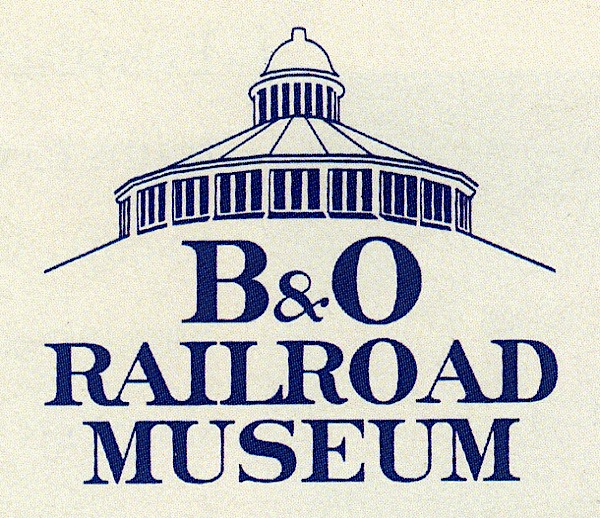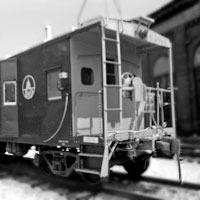 |
B&O Railroad Museum Rolling Stock |
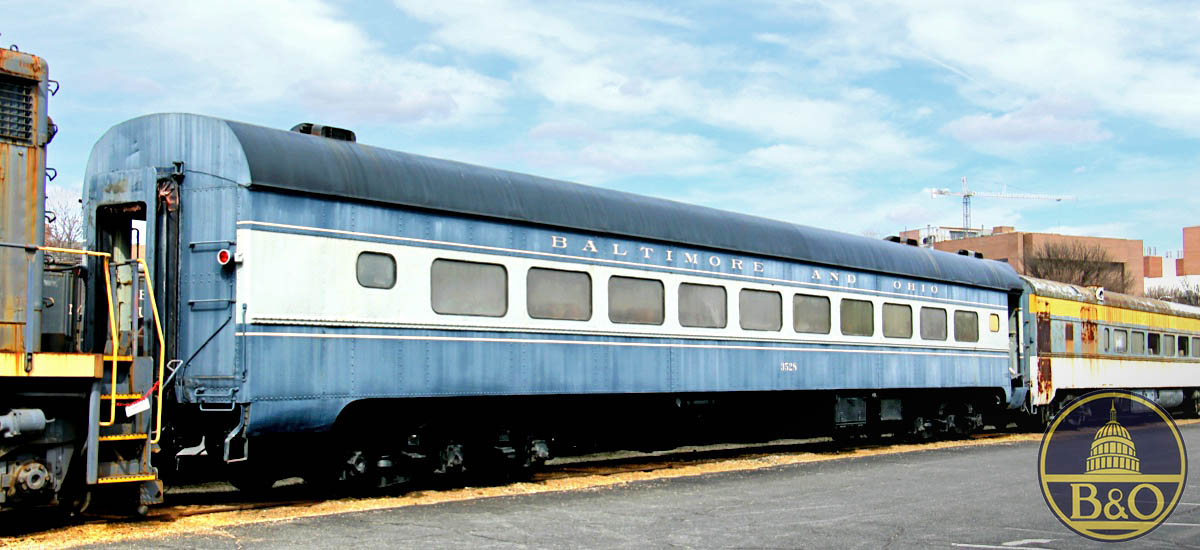
Baltimore, Md / Mar 2016 / RWH
Freight Equipment

Early boxcars were built out of wood. However the B&O began experimenting with the use of iron during the 1840s. During the Civil War, the B&O built boxcars with iron bodies and wooden frames. These boxcars were usually built to carry flour and gunpowder, which was placed in barrels. In 1863, B&O #17001 was built at the Mt. Clare shops. The 17001 featured link and pin couplers and hand brakes that were typical of its time. The cost to produce the new iron boxcars was almost $200 more than the original wooden boxcars, but the demand from the military to produce these boxcars helped defray the costs. Despite their durability, the new iron boxcars had their problems. The iron tended to rust because of "internal sweating." By the 1870s, the B&O had stopped production of these iron boxcars. The 17001 and the other boxcars built at this time were also used for general freight service. 17001 ended its career in lime service. In 1927, the No. 17001 and its sister No. 17000 were displayed at the Fair of the Iron Horse. 17001 was last used by the B&O for storage and was renumbered as the X-2068 and later as X-961.
>Baltimore & Ohio Railroad Museum
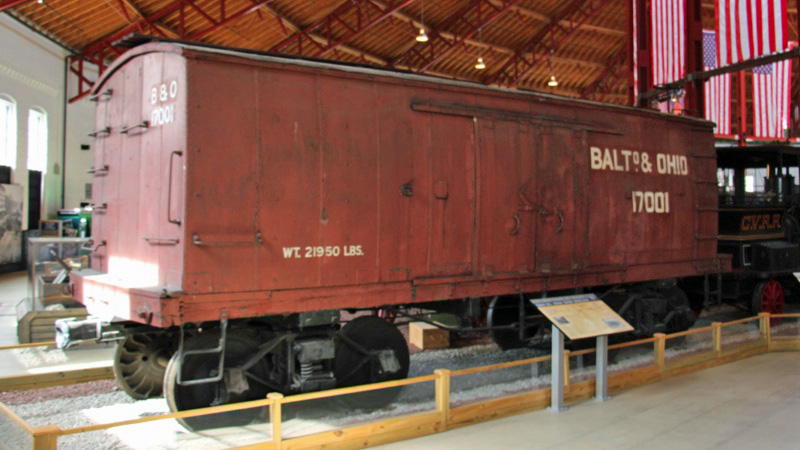
Baltimore & Ohio #17001
iron boxcar / Baltimore, Md / Mar 2016 / RWH
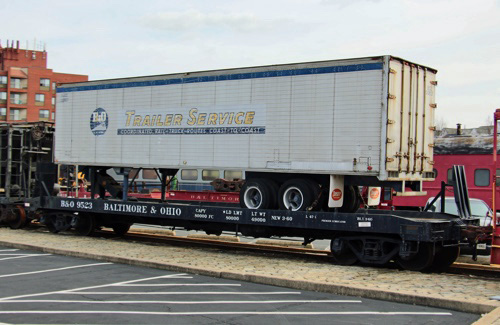
Baltimore & Ohio #9523
TOFCEE flatcar (1960) / Baltimore, Md / Mar 2016 / RWH
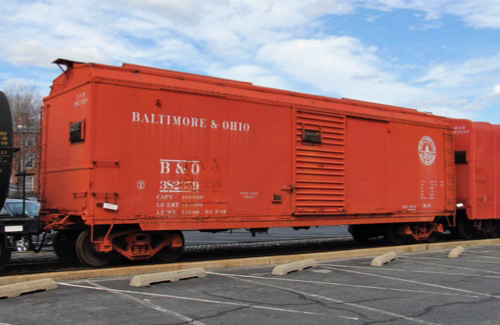
Baltimore & Ohio #382359
automobile boxcar (1926) / Baltimore, Md / Mar 2016 / RWH
 Wagon Tops
Wagon Tops
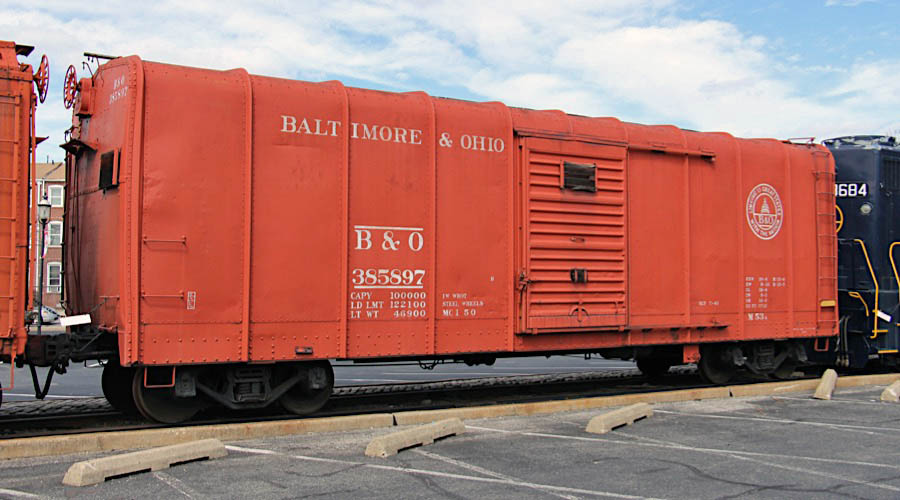
Baltimore & Ohio #385897
wagon top boxcar (1941) / Baltimore, Md / Mar 2016 / RWH

During the 1920s, the 40-foot boxcars were capable of transporting any type of freight objects and were one of the staples of transportation for 40 years. In 1935, the Baltimore & Ohio Railroad designed its own innovative look for the boxcar. The B&O designed boxcar had a ribbed wagon top design. The No. 385897 was built by the Baltimore & Ohio Railroad in 1941. It was lightweight and could carry up to 50 tons.
Some of the wagon top boxcars survived into the 1970s. By the 1970s, the once popular design was considered small and lacked proper protection for cargo. The No.385897 retired from service in 1981 and a year later was sent to the B&O Railroad Museum.
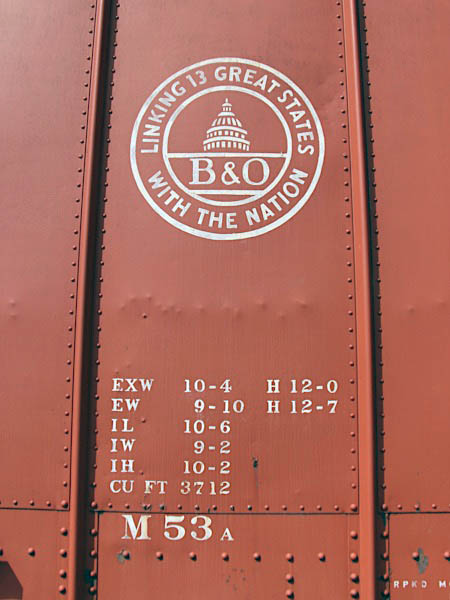
Mar 2016 / RWH
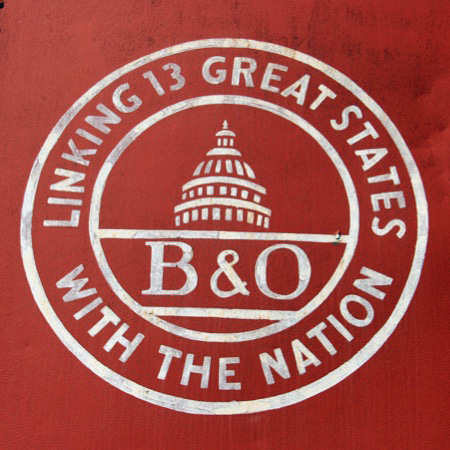
Mar 2016 / RWH
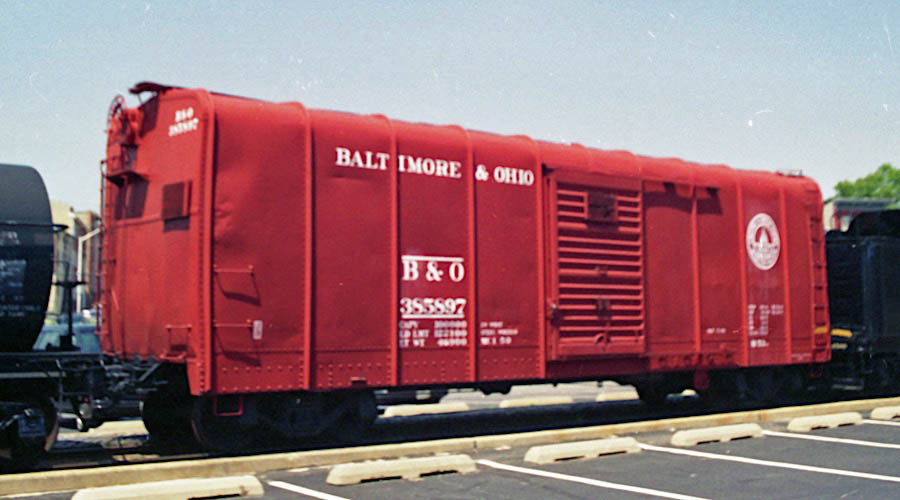
Baltimore, Md / Aug 2004 / JCH
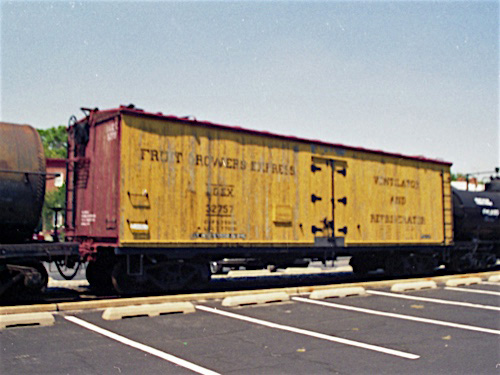
Fruit Growers Express Company #32757
reefer (1923) / Baltimore, Md / Aug 1994 / JCH
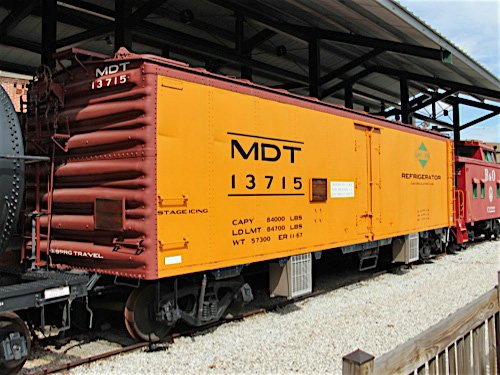
Merchants Dispatch Transportation #13715
reefer (1958) / Baltimore, Md / Mar 2016 / RWH
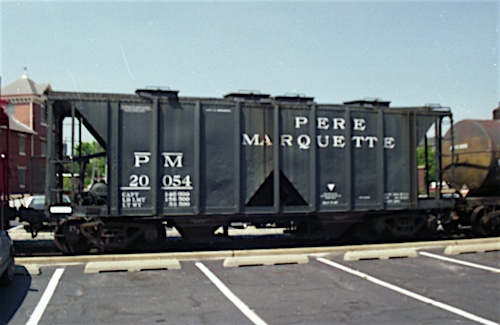
Pere Marquette #20054
covered hopper (1946) / Baltimore, Md / Aug 1994 / JCH
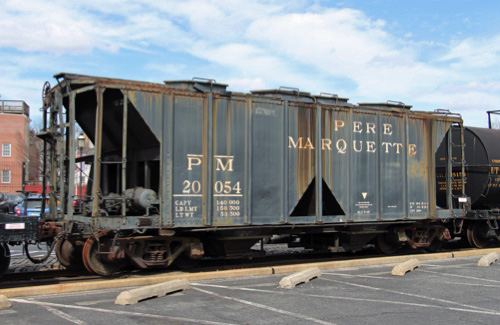
Baltimore, Md / Mar 2016 / RWH
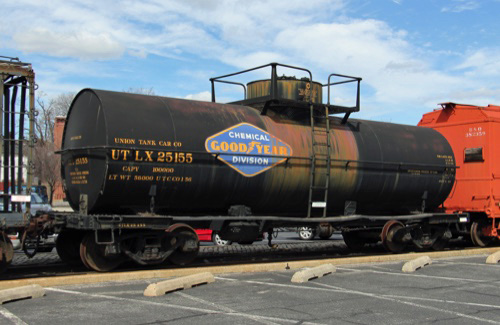
Union Tank Car Company #25155
tank car (1923) / Baltimore, Md / Mar 2016 / RWH
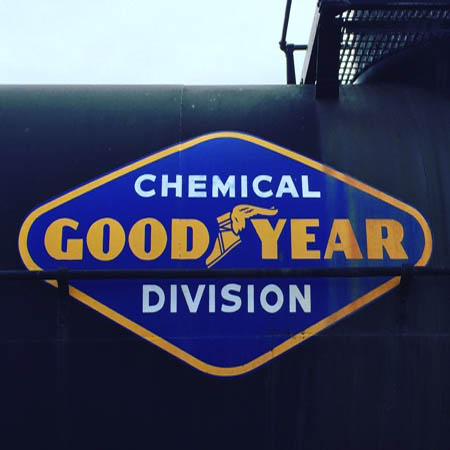
RWH
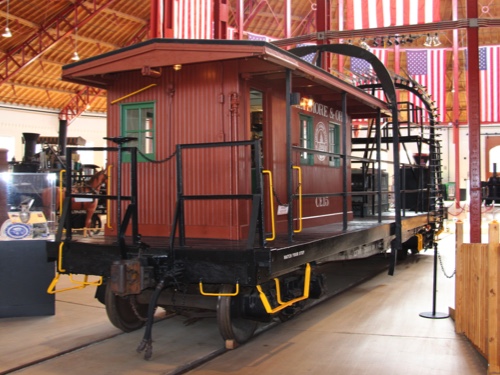
Baltimore & Ohio #CE-15, "Leaping Lena"
tunnel clearance car (1904) / Baltimore, Md / Mar 2016 / RWH
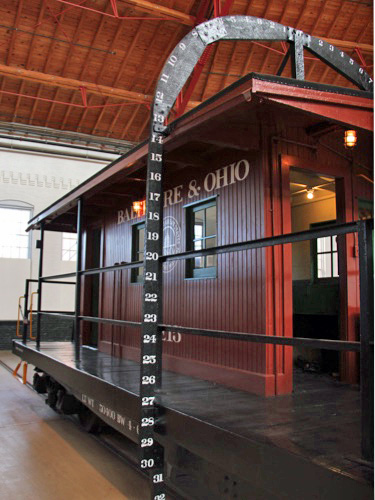
Mar 2016 / RWH
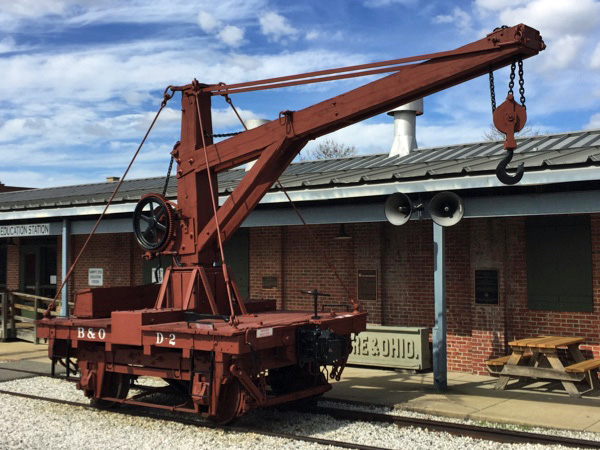
Baltimore & Ohio #D2
wooden derrick crane (1878) / Baltimore, Md / Mar 2016 / RWH
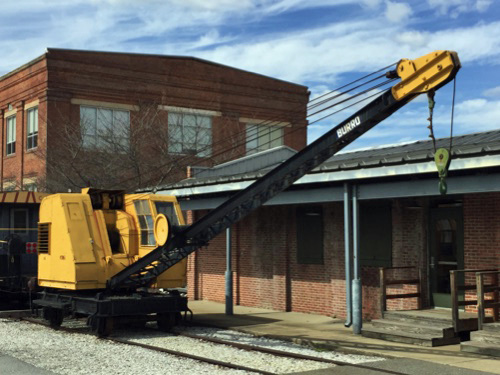
Chesapeake & Ohio #18
Cullen-Friestedt burro crane (1939) / Baltimore, Md / Mar 2016 / RWH
Cabooses
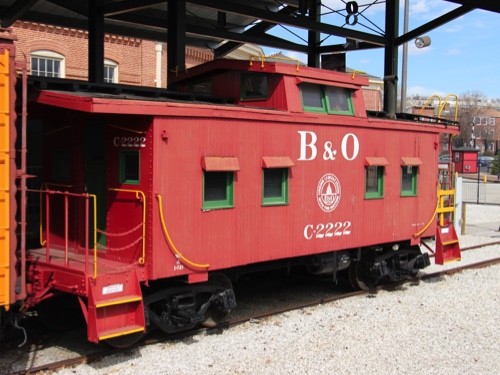
Baltimore & Ohio #C-2222
wooden caboose (1929) / Baltimore, Md / Mar 2016 / RWH
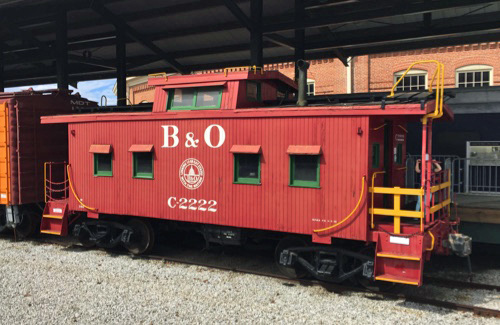
Mar 2016 / RWH
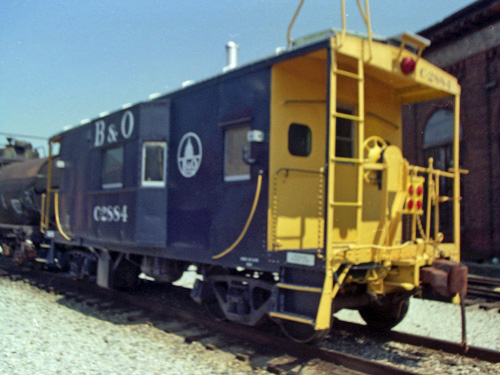
Baltimore & Ohio #C-2884
bay window caboose / Aug 1994 / JCH
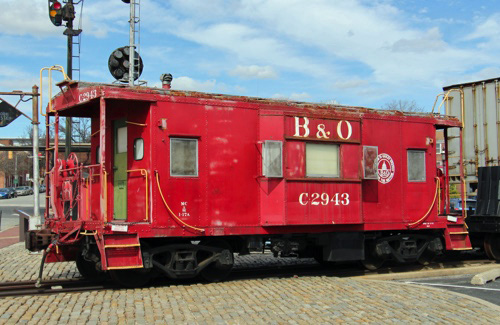
Baltimore & Ohio #C-2943
bay window caboose (1961) / Baltimore, Md / Mar 2016 / RWH
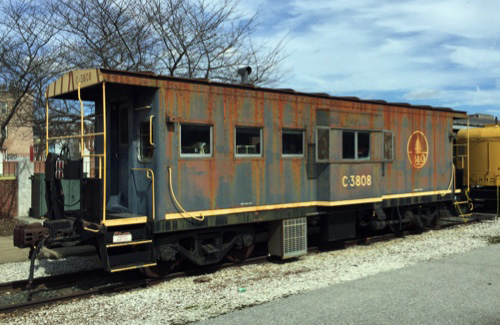
Baltimore & Ohio #C-3808
bay window caboose (1971) / Baltimore, Md / Mar 2016 / RWH
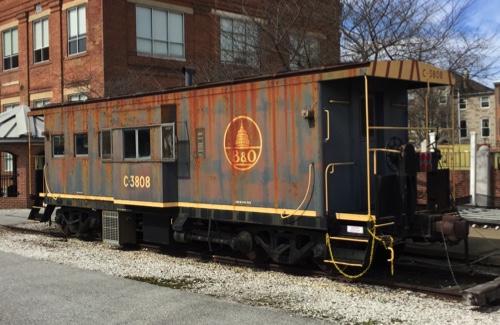
Mar 2016 / RWH
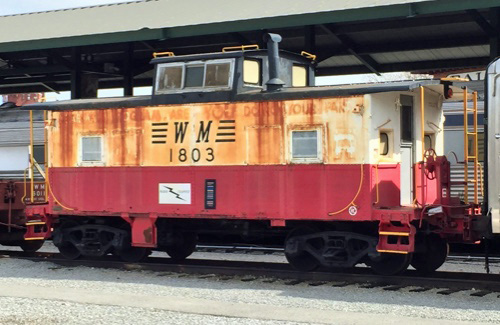
Western Maryland #1803
steel caboose (1936) / Baltimore, Md / Mar 2016 / RWH
Passenger Equipment
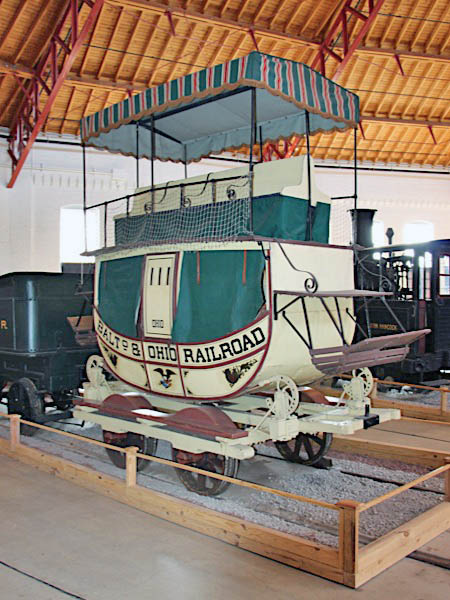
Baltimore & Ohio "Ohio"
1830 wooden coach (1927 replica) / RWH

Richard Imlay, a Baltimore carriage builder, built six carriages for the Baltimore & Ohio Railroad for use on the track leading to Ellicott Mills from Baltimore in 1830. Imlay used the pattern and design of the standard turnpike stagecoach to develop his rail cars. The carriage body was perched on four un-sprung wheels and cradled by heavy leather straps, and a brake lever was placed next to the outside seat. These carriages were meant for use on low speed horse operation railroads and later, early steam locomotives. The railroad soon learned that these designs were impractical because they were unstable and passengers were discomforted by the hot ash and cinders blowing back in their direction. In addition, railroads found that passengers wanted the freedom to stand up and move around while traveling, which eventually lead to the adoption of standard rectangular coaches with center aisles and bench seats. In 1927, a replica of the "Ohio" was built for the Fair of the Iron Horse. The car was named after one of the original six carriages.
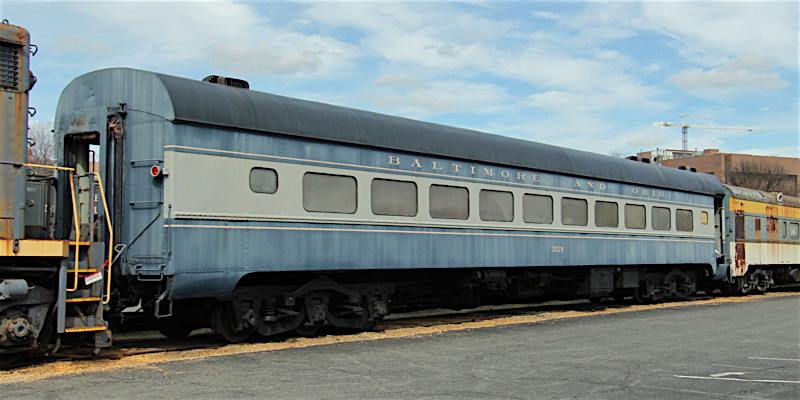
Baltimore & Ohio #3528
Pullman class A-18CL coach (1923) / Baltimore, Md / Mar 2016 / RWH
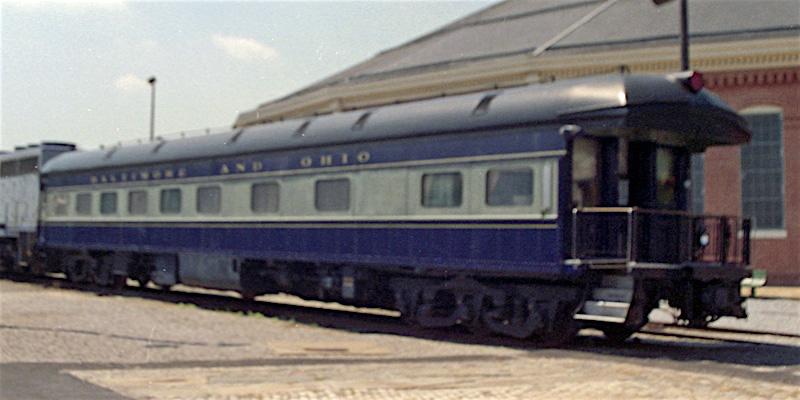
Baltimore & Ohio #908 "John T. Collinson"
office car (1917) / Baltimore, Md / Aug 1994 / JCH
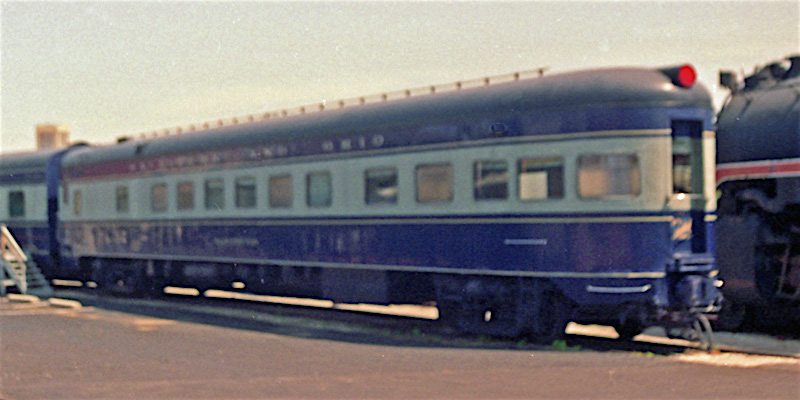
Baltimore & Ohio #3316 "Washington"
Pullman class Z-5 observation lounge (1949) / Baltimore, Md / Aug 1994 / JCH
